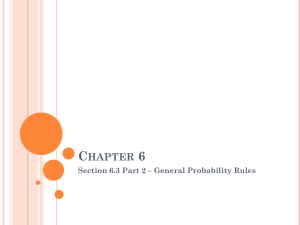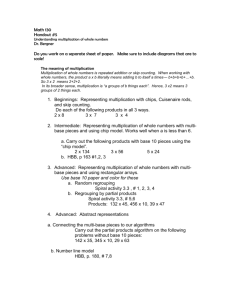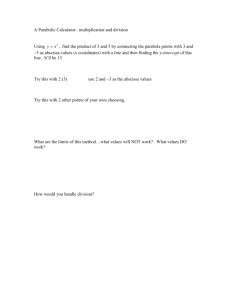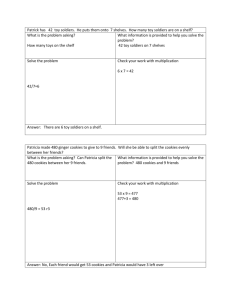Integer Mulitplication
advertisement
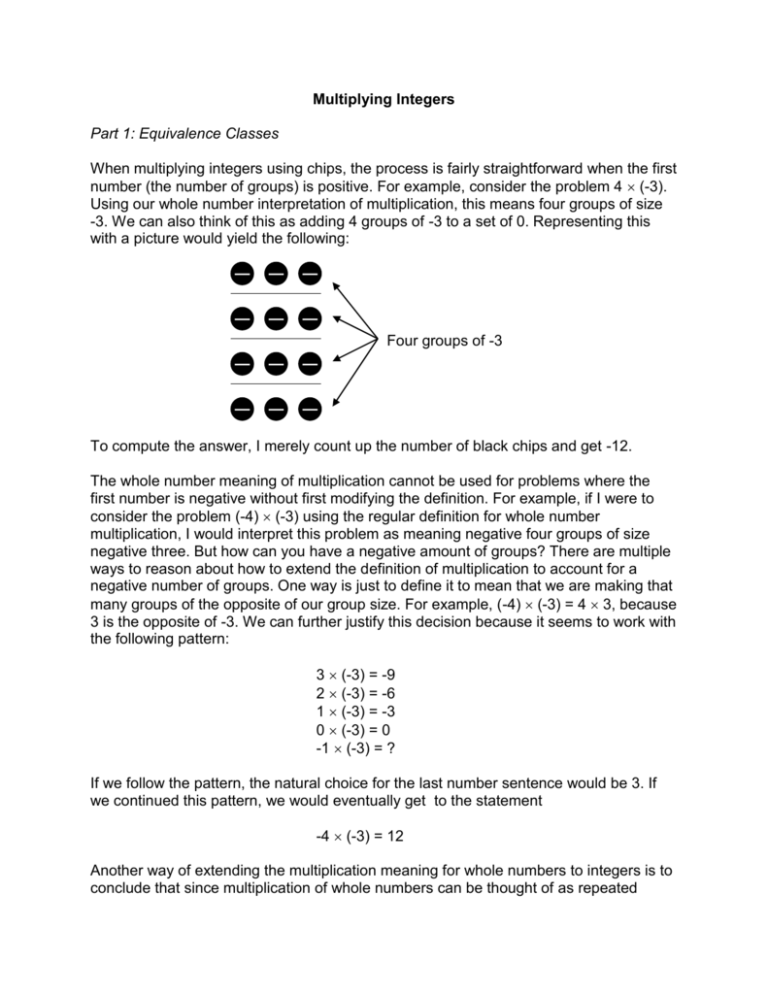
Multiplying Integers Part 1: Equivalence Classes When multiplying integers using chips, the process is fairly straightforward when the first number (the number of groups) is positive. For example, consider the problem 4 (-3). Using our whole number interpretation of multiplication, this means four groups of size -3. We can also think of this as adding 4 groups of -3 to a set of 0. Representing this with a picture would yield the following: — — — — — — Four groups of -3 — — — — — — To compute the answer, I merely count up the number of black chips and get -12. The whole number meaning of multiplication cannot be used for problems where the first number is negative without first modifying the definition. For example, if I were to consider the problem (-4) (-3) using the regular definition for whole number multiplication, I would interpret this problem as meaning negative four groups of size negative three. But how can you have a negative amount of groups? There are multiple ways to reason about how to extend the definition of multiplication to account for a negative number of groups. One way is just to define it to mean that we are making that many groups of the opposite of our group size. For example, (-4) (-3) = 4 3, because 3 is the opposite of -3. We can further justify this decision because it seems to work with the following pattern: 3 (-3) = -9 2 (-3) = -6 1 (-3) = -3 0 (-3) = 0 -1 (-3) = ? If we follow the pattern, the natural choice for the last number sentence would be 3. If we continued this pattern, we would eventually get to the statement -4 (-3) = 12 Another way of extending the multiplication meaning for whole numbers to integers is to conclude that since multiplication of whole numbers can be thought of as repeated addition, then multiplication with a negative number of groups can be thought of as taking away that many copies of the group size. For example, if we wanted to compute (-4) (-3), we would want to remove four groups of -3 from a set of 0. We would have to start with 0, but represented in a way that would allow us to remove four groups of -3. I chose to start out with the following representation of 0. + + + + + + + + + + + + + + — — — — — — — — — — — — — — When I remove 4 groups of 3 black chips, I’m left with the following: + + — — + + — + — + — + — + — + — + — + — + — + — + — — When I make as many black and white chip combinations as possible, I’m left with 12 white chips. Thus, my answer to (-4) (-3) is 12. Part 2: Number Line We can use a number line to interpret multiplication on a number line by assigning a meaning to each symbol in terms of movement along the number line. For example, in 3 2 can be thought of as taking 3 walks forward of 2 steps while facing right. The signs on the numbers will determine whether the walker is facing left or right and walking forward or backward. In 3 2 we can assign the negative on the 3 (number of walks or groups) as the walking backward and the negative on the 2 (number of steps) as facingleft. In that case, walking backward while facing left will have the walker moving right. There are other interpretations of integer multiplication on the number line. Whichever one is chosen, the definitions need to be consistent. The meaning of each of the symbols is described in the figure at the right.



